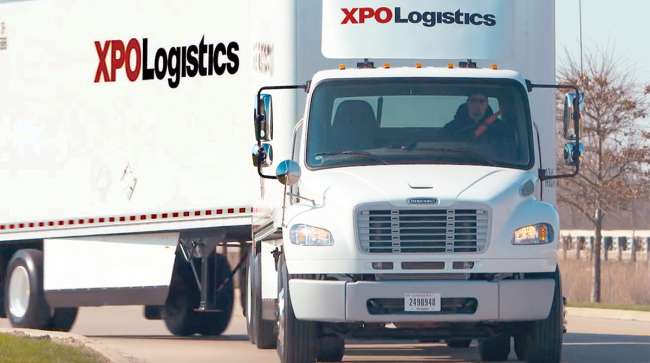Staff Reporter
XPO Stresses Agility in Supply Chain Management During Pandemic

[Ensure you have all the info you need in these unprecedented times. Subscribe now.]
Executives from XPO Logistics said flexibility, visibility and data science have been key to navigating the business landscape during the coronavirus pandemic, as it relates to both employees and customers.
“The word I would use is agility,” said Drew Wilkerson, XPO’s president of North American transportation, during a June 23 webinar hosted by the company. “We had to be very agile in how we were dealing with both our customers and our employees.”
As it relates to employees, he said the company spent millions of dollars to protect frontline workers, with measures that included deep-cleaning facilities and providing protective gear.

Wilkerson
“It started with our employees,” Wilkerson said. “Employee safety was the most important thing for us when COVID-19 broke out months ago.”
Also paramount was helping customers address their needs as the economic effects of the pandemic set in.
“For our customers there’s really a few things we had to do,” Wilkerson said. “The first thing we had to do was give them access to capacity. We had to provide them massive amounts of capacity and, as you can imagine with COVID, capacity can go up or down depending on what line of business you’re in.”
“When we think about our customers and supply chains changing over time, it’s really about being able to respond to the demands of our customer,” added XPO Logistics Chief Information Officer Mario Harik, pointing to changes in the types of products customers are receiving and where those products are being sourced. He noted that the coronavirus has accelerated some of these trends, with people changing their daily habits while staying home.
Read the latest updates on how XPO is responding to the #COVID19 crisis at our information hub: https://t.co/9YpyJgt3Pb — XPO Logistics, Inc. (@XPOLogistics) April 8, 2020
“More consumers are buying more online,” Harik said. “These types of changes require us as a logistics provider to adapt quickly and provide nimble and effective solutions for our customers and be able to support them in fulfilling those needs.”
Part of that is the ability to shift and offer multiple modes of transportation, Wilkerson said.
A vital element both now and going forward is technology, both said, especially as it relates to mining data to better predict markets.
“Some of the categories we look at as a business is around machine learning and [artificial intelligence],” Harik said. “It applies to areas like forecasting. With the pandemic, you can imagine consumers having different trends on what products they buy — for example, from an e-commerce standpoint we see more consumers buying groceries online or personal care products.”
But amid the unpredictability, opportunities arose to find new ways to work with customers, Wilkerson said.
“It’s giving us new opportunities in how we’re servicing them,” he said. “For our big-box retailers, they’ve seen their volumes spike. They saw peak season come way earlier this year so for us we needed to show our ability to raise our capacity to meet their demand and we were able to do that.”
He cited Ford Motor Co. as an example. As demand for new vehicles sank in the pandemic’s early days, the automaker turned to producing items needed to fight COVID-19.
“They shifted and started making masks, gowns, face shields and ventilators,” Wilkerson said. “We shipped over 20 million masks for Ford across the country. On the government side we’re working with state and local authorities just to make sure they got all the PPE gear they need.”
XPO Logistics ranks No. 3 on the Transport Topics Top 100 list of largest for-hire carriers in North America, and No. 1 on the TT Top 50 list of the largest logistics companies in North America.
Subscribe: Apple Podcasts | Spotify | Amazon Alexa | Google Assistant | More

